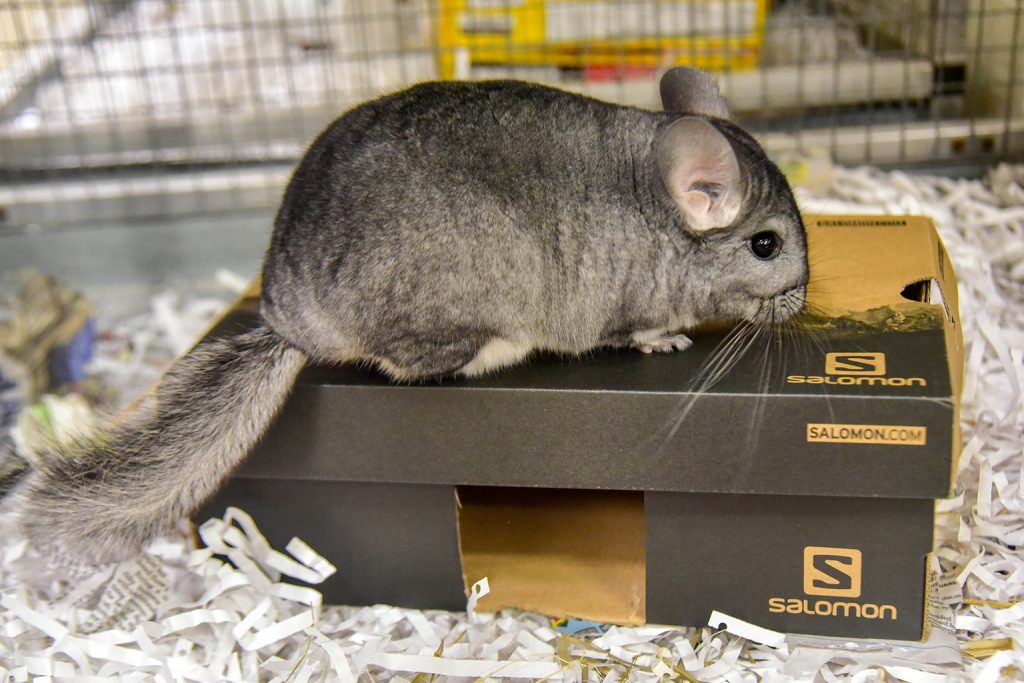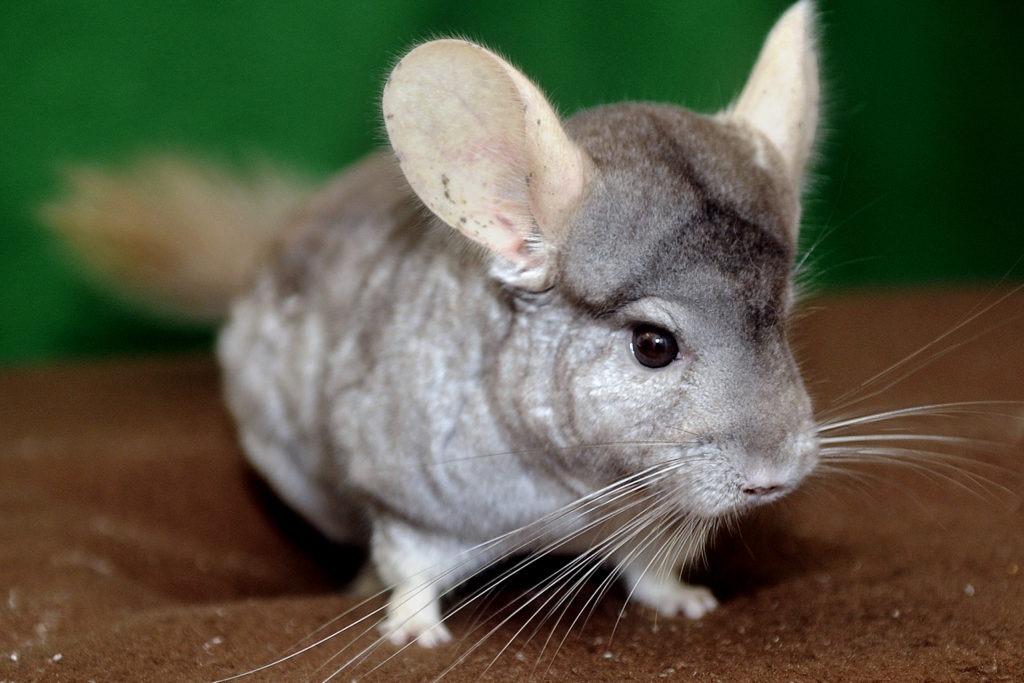Overview
“Where I live”
Chinchillas are native to western South America. They live on the rocky slopes of the Andes Mountains at elevations between 9 and 15 thousand feet. The land is arid, with sparse vegetation and plenty of rock cover. Chinchillas were once common along the entire western coastline of South America, but are now limited mainly to the countries of Bolivia, Peru, and Chile.
Chinchilla are a featured species in The Maryland Zoo’s Animal Embassy collection. Zoo educators introduce the chinchilla and other Animal Ambassadors to audiences in education programs on and off grounds.
“How I live there”
Chinchillas are well adapted to their cool and arid montane habitat. Their fur is extremely dense – 80 hairs per follicle, on average, as compared to one hair per follicle for humans – and keeps them well insulated from the cold. Their long, strong hind legs propel them across the rocky terrain in search of food – and away from predators! Their large eyes and ears are well suited for nighttime vision and hearing.
Chinchillas are social rodents that live in colonies of up to 100 animals. By day they mainly rest in rocky crevices and caverns, out of sight of predators. They may come out of their burrows to warm themselves in the sunshine, take a dust bath, or hop around in the rocks, but they are most active at dawn, dusk, and night. Out in the open, at least one chinchilla will maintain a lookout for the colony and vocalize alarms. All remain close enough to their burrow entrances to scurry back inside when necessary.
Chinchillas forage for food at night. When feeding, they sit upright on their back legs and hold food with their front. They eat bark, grasses, herbs, and other native Andean plants. Water is scarce where they live, but chinchillas are adapted to get as much water as they need from the plants that they eat.
“Making my mark”
Mention the word “chinchilla” and most people immediately think of soft, thick, bluish-grey fur. Such fashion-forward fame has not helped the chinchilla. They have been trapped to near extinction for their pelts. Andean tribes always hunted chinchillas for their fur, which they used to make blankets and clothing. Sustenance hunting of this sort did not threaten the stability of wild populations, but eventual and continued commercial hunting has. By the late 19th century, chinchilla fur had become a valuable export to Europe, North America, and elsewhere and was in increasingly high demand. Chinchilla populations began to decline and those that remain are still threatened by hunting, even though now illegal.
Raising Young
Chinchillas are mostly monogamous, which means that they mate for life. Females produce two litters per year on average, with two to three young per litter. For small mammals, this is considered a low reproductive rate. Breeding season falls between the months of May and November. Interestingly, females tend to be very aggressive toward each other and toward males during breeding season. Females give birth after a gestation period of about four months. The offspring – called kits – are well developed at birth. Their eyes are open, they are covered in fur, and each weighs about 35 grams (slightly more than an ounce!)
Mothers nurse and care for their offspring for six to eight weeks. Juveniles reach sexual maturity at about eight months of age.
“What eats me”
Hawks, eagles, snakes, skunks, and humans prey on chinchillas. A chinchilla will try to flee and, if trapped, may try to frighten a predator off by standing on its hind legs to look bigger. Chinchillas also puff up their already fuzzy tails to look more intimidating. If all else fails, a chinchilla will try to bite its attacker and, if successful, will inflict a painful bite. As with all rodents, a chinchilla’s incisor teeth never stop growing! Chinchilla fur also lends its own defense – it is so thick that a predator, when attempting to bite its prey, may end up with only a mouthful of fur.
Conservation
Chinchillas are endangered in the wild. It is now illegal to trap or hunt chinchillas throughout their range, but enforcement is notoriously difficult in the remote areas where chinchillas live.
Taxonomy
- Kingdom: Animalia
- Phylum: Chordata
- Subphylum: Vertebrata
- Class: Mammalia
- Order: Rodentia
- Family: Chinchillidae
- Genera: chinchilla
- Species: lanigera
What is an Animal Ambassador?
The Maryland Zoo refers to its special collection of education program animals as “Animal Ambassadors.” The Zoo currently cares for more than 60 Animal Ambassadors, representing more than 40 species, both native and exotic. These animals are managed separately from the rest of the Zoo’s collection and cannot be seen on exhibit at the Zoo. However, many can be seen up close and personal on a rotating basis at Creature Encounters, the Zoo’s outdoor education center; at camp and school programs at the Zoo; as featured participants in community-based Outreach programs; and at special events on and off Zoo grounds.
Animal Ambassadors spend countless hours working with their human handlers, developing bonds of trust and communication that will allow them to appear in front of audiences large and small. They are not show animals. They behave naturally, focusing audiences’ attention on their natural behaviors and adaptations and giving living, breathing meaning to concepts and topics that students may be studying.
Animal Ambassadors travel all over the state of Maryland and beyond, and many also make local and national media appearances, educating about wildlife while representing the Zoo and its commitments to animal welfare and conservation.
What is The Animal Embassy?
The Animal Embassy at The Maryland Zoo is an off-exhibit area that is not open to the public. It is where the Zoo’s “Animal Ambassadors,” or education program animals, live. The Embassy is home to more than 60 individual animals representing more than 40 different species. It is staffed by its own dedicated group of keepers and volunteers and has both indoor and outdoor living space for the animals.



